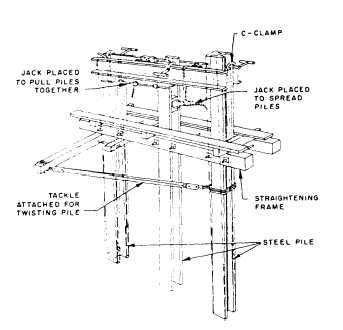Figure 12-73.—Aligning and capping steel pile bents.
driving, or that is to be salvaged (steel sheet piles are
frequently salvaged for reuse) is usually extracted
(pulled). Pulling should be done as soon as possible
after driving; the longer the pile stays in the soil, the
more compact the soil becomes, and the greater the
resistance to pulling will be. Methods of pulling piles
are as follows:
1. In a direct lift method, a crane palls the pile.
The crane hoist line is rigged to the pile through the use
of wire rope rigging, and an increase in pull is gradually
applied to the pile. Lateral blows from a skull cracker
(heavy steel ball swung on a crane line to demolish
walls) or a few light blows on the butt or head with the
pile-driving hammer are given to break the skin friction,
and the crane pull is then increased. If the pile still
refuses to extract, it may be loosened by jetting, air
extractors, or beam pullers.
2. The 5,000-pound pneumatic, or steam, hammer
may be used in an inverted position to pull piles. The
hammer is turned over and the wire rope rigging is
attached to it and the pile is extracted. A pneumatic
extractor may also be used. The crane line, holding the
hammer or extractor, is hoisted taut; and the upward
blows of the hammer ram on the sling, plus the pull of
the crane hoist, are usually enough to pull the pile.
3. Tidal lift is often used to pull piles driven in
tidewater. Rigging, wrapped around the piles, is
attached to barges or pontoons at low tide; the rising tide
pulls the piles as it lifts the barges or pontoons.
Types of Piles
The principal use of piles is for the support of
bridges, buildings, wharves, docks and other structures,
and in temporary construction. A pile transfers the load
into an underlying bearing stratum by either of the
following:
1. Friction along the embedded length of the pile
2. Point bearing plus any bearing from the taper of
the pile
A pile maybe classified roughly as friction or end
bearing, according to the manner in which they develop
support. The load must be carried ultimately by the soil
layers around and below the points of the piles, and
accurate knowledge of the compressibility of these soil
layers is of utmost importance.
Some of the common terms used with piles are as
follows:
1. Piles. A pile is a load-bearing member made of
timber, steel, concrete, or a combination of these
materials, usually forced into the ground to transfer the
load to underlying soil or rock layers when the surface
soils at a proposed site are too weak or compressible to
provide enough support.
2. Pile foundation. A pile foundation is a group of
piles that supports a superstructure or a number of piles
distributed over a large area to support a mat foundation.
3. Bearing piles. Piles that are driven vertically
and used for the direct support of vertical loads are
called bearing piles.
Bearing piles transfer the load
through a soft soil to an underlying firm stratum. They
also distribute the load through relatively soft soils that
are not capable of supporting concentrated loads.
4. End-bearing piles. Typical end-bearing piles are
driven through very soft soil, such as a loose silt-bearing
stratum underlain by compressible strata. Remember
this factor when determining the load the piles can
support safely.
5. Friction piles. When a pile is driven into soil of
fairly uniform consistency and the tip is not seated in a
hard layer, the load-carrying capacity of the pile is
developed by skin friction. The load is transferred to the
adjoining soil by friction between the pile and the
surrounding soil. The load is transferred downward and
laterally to the soil.
6. Combination end-bearing and friction piles.
Many piles carry loads by a combination of friction and
end bearing. For example, a pile may pass through a
12-51

